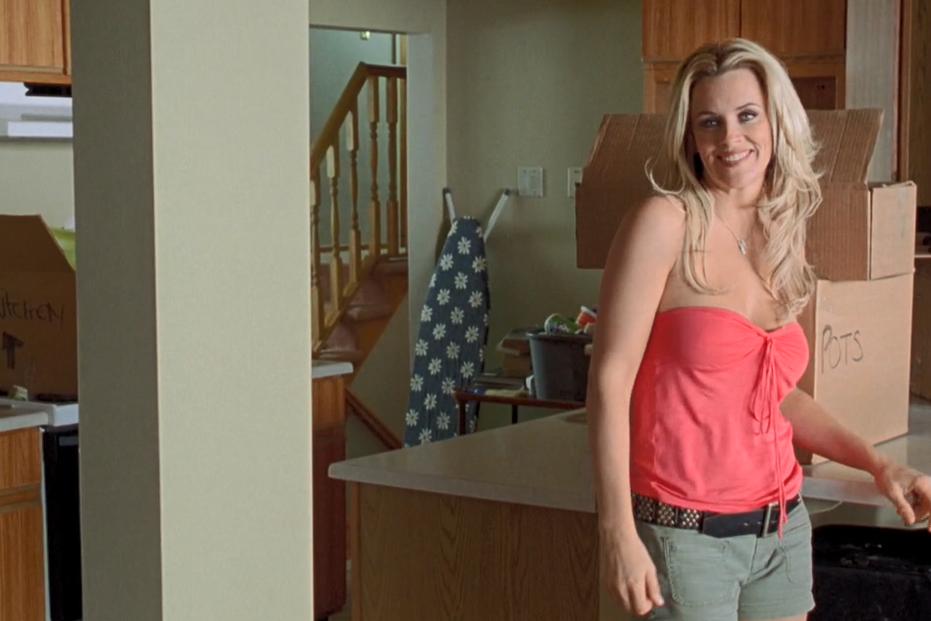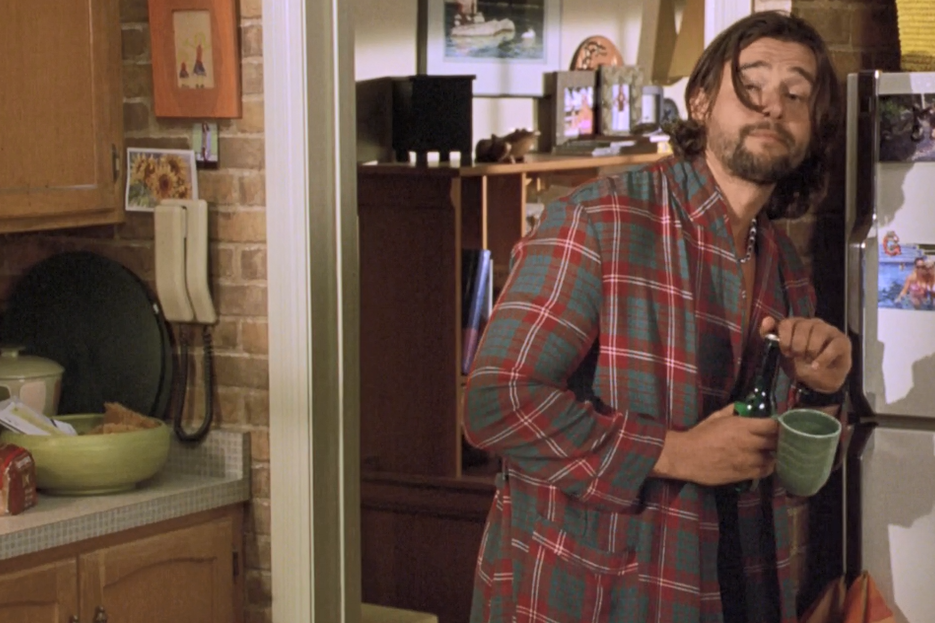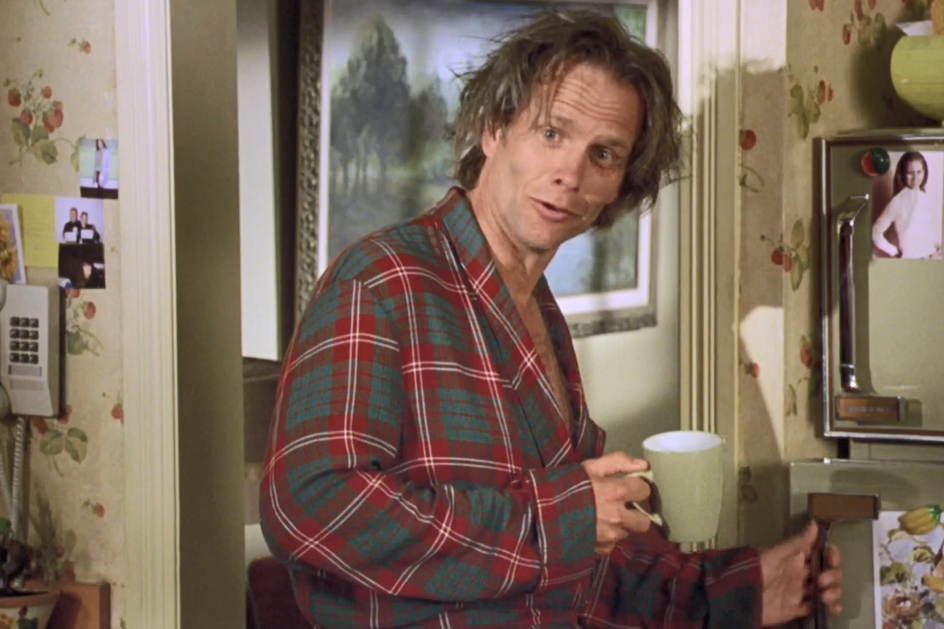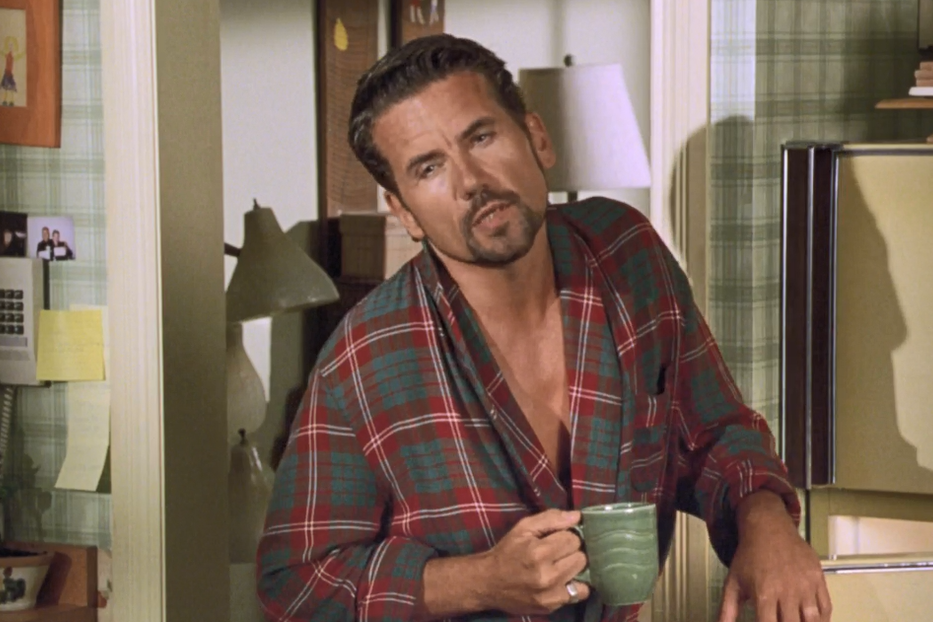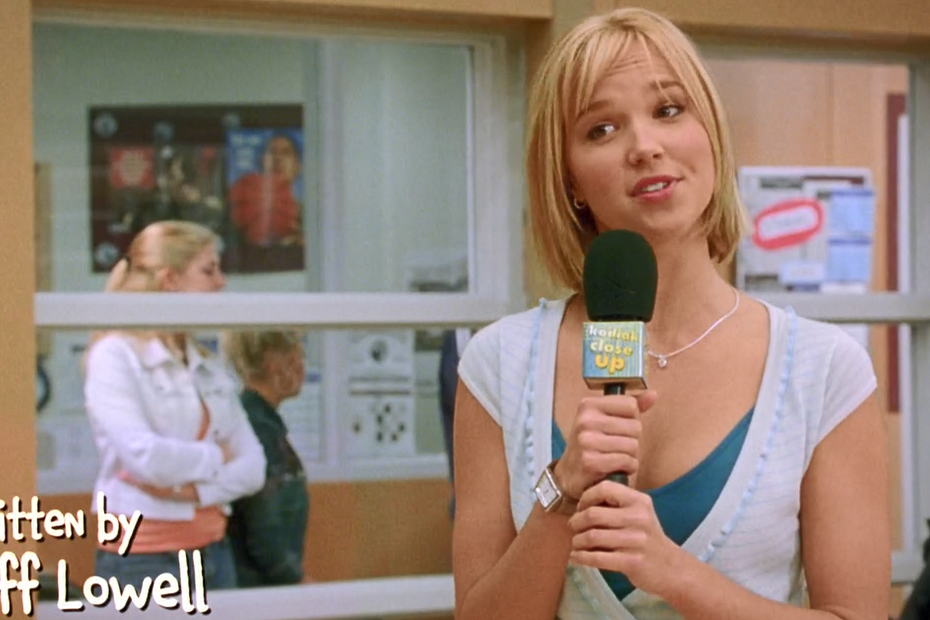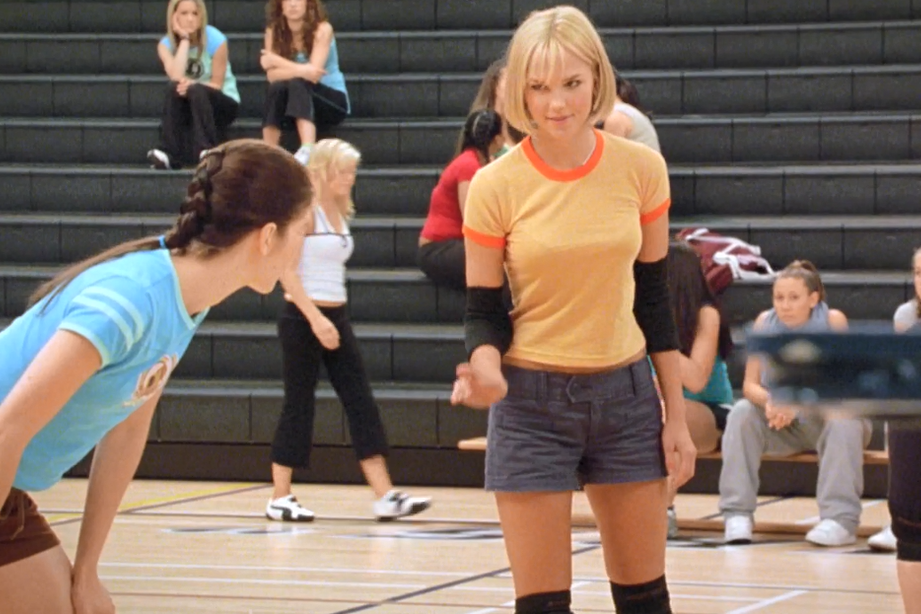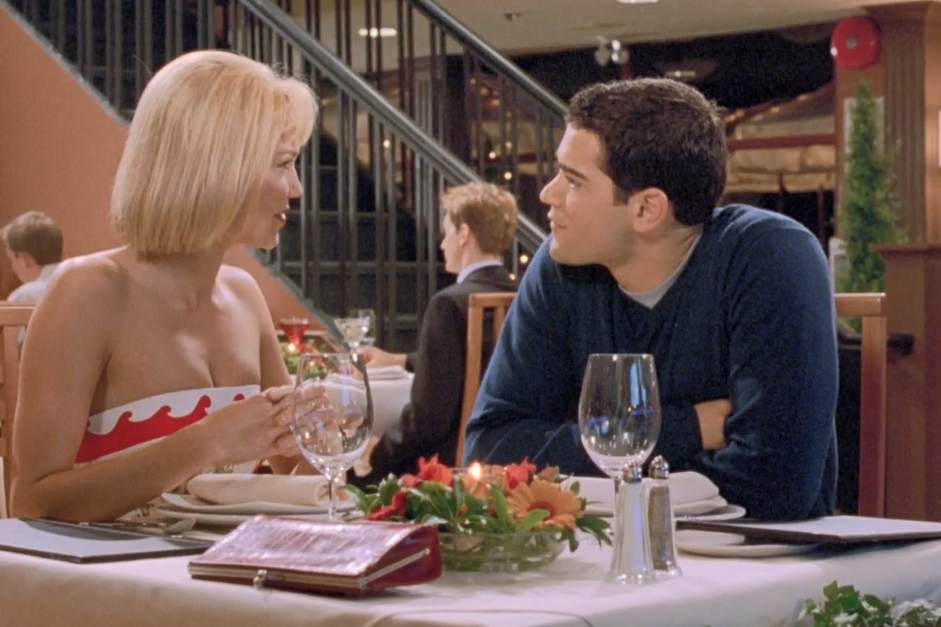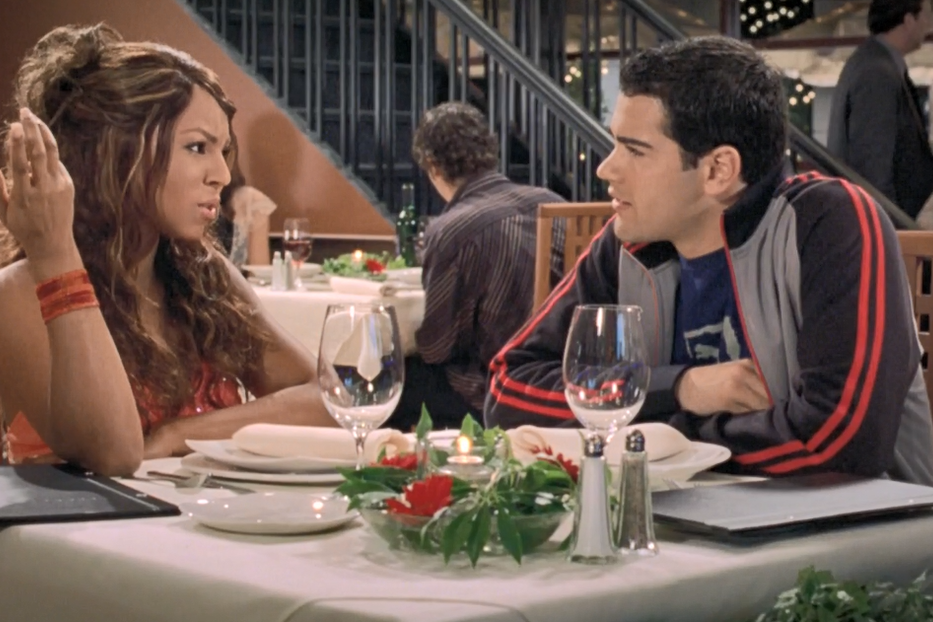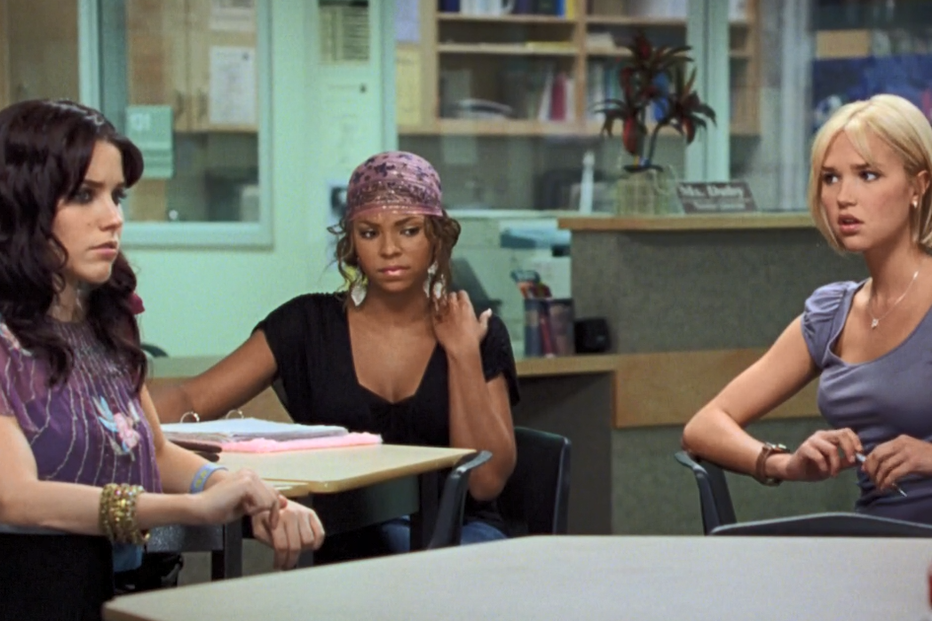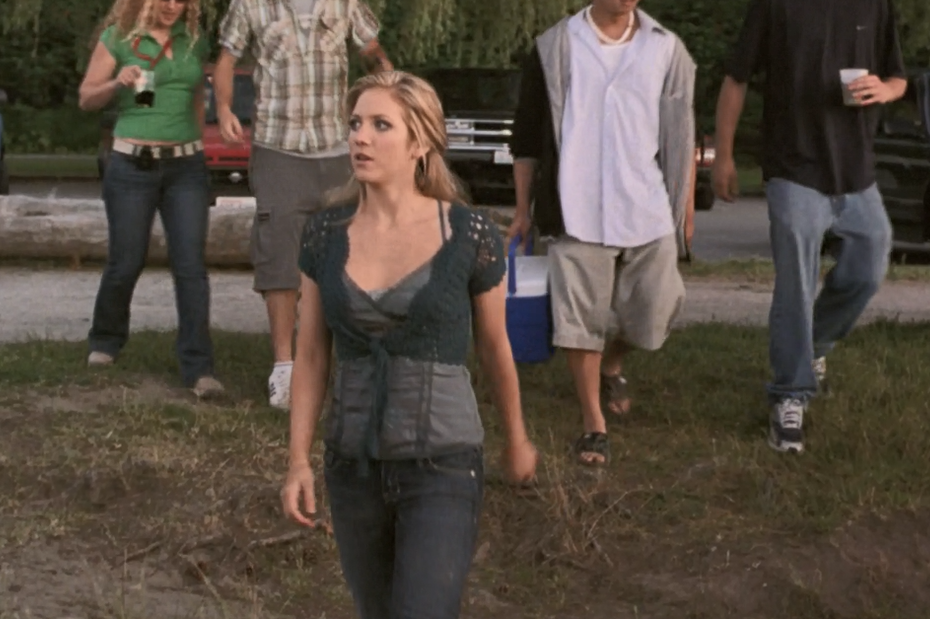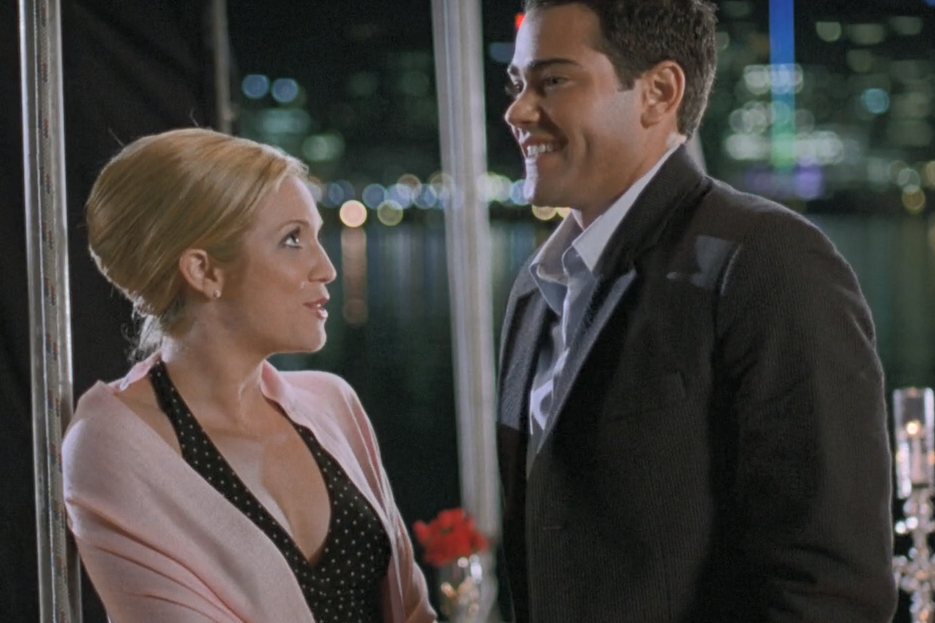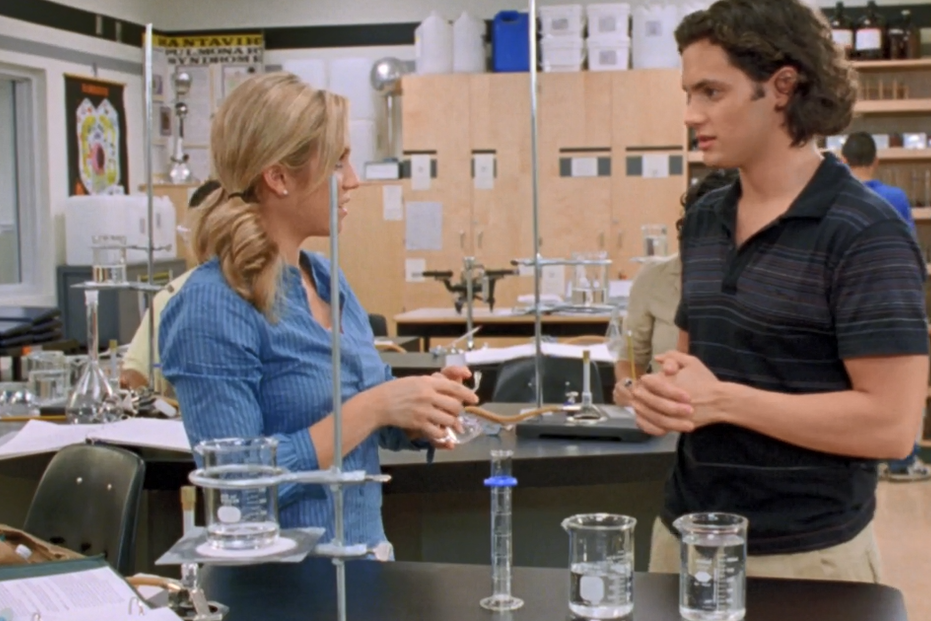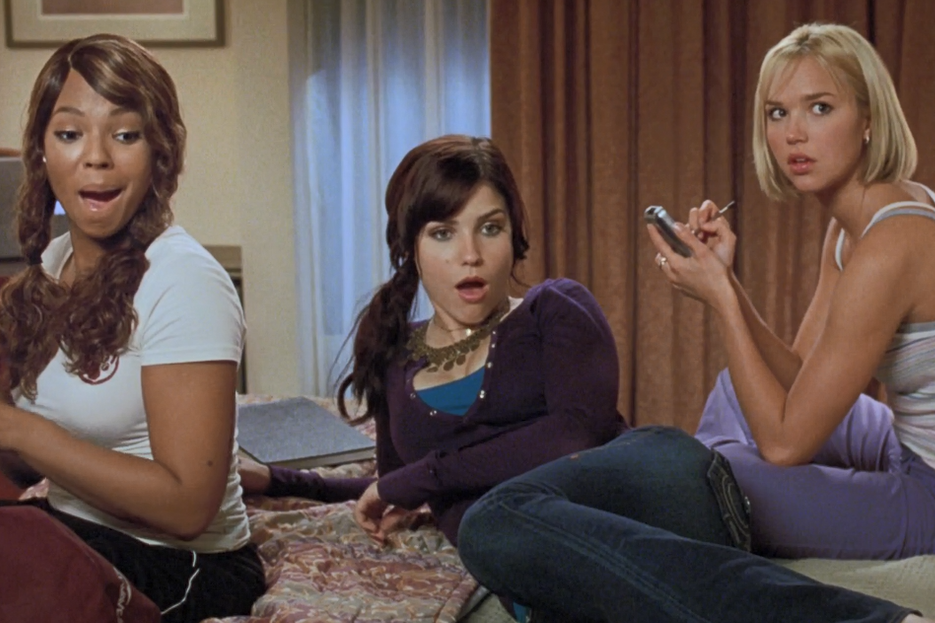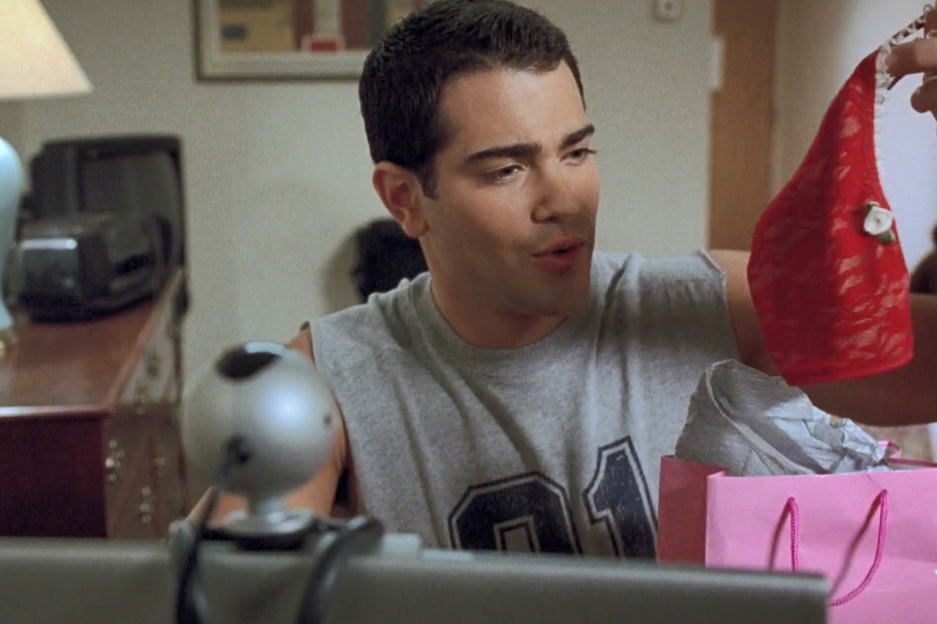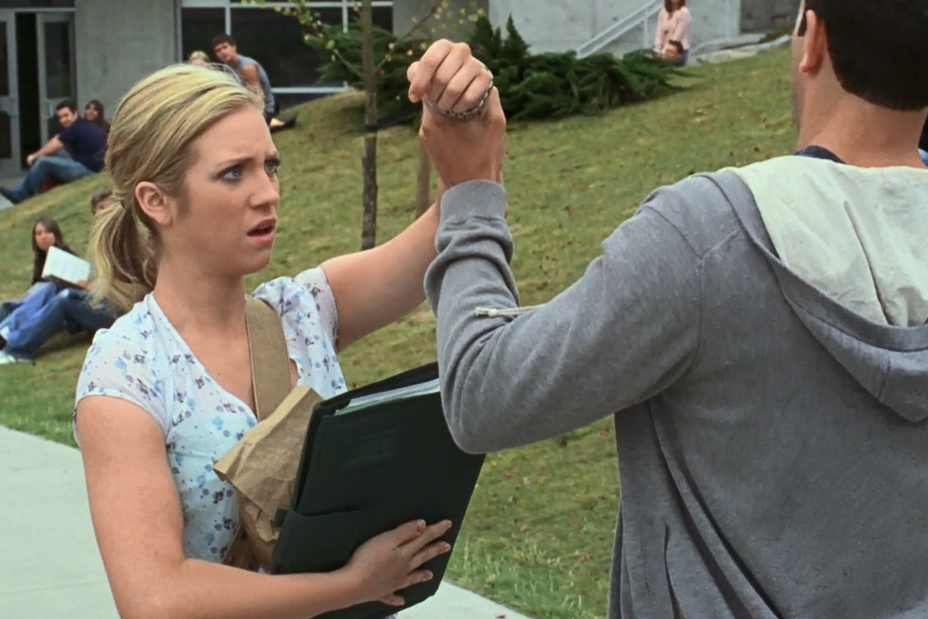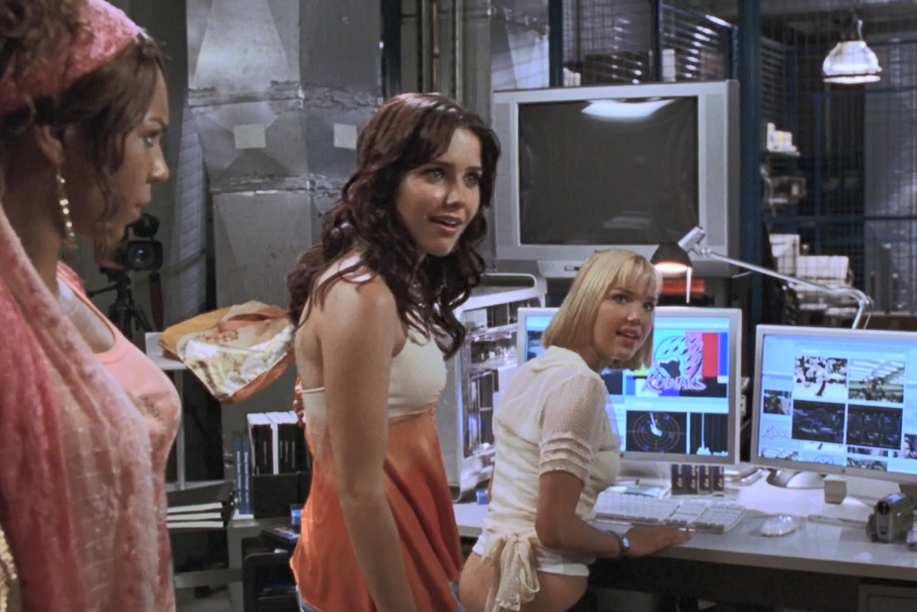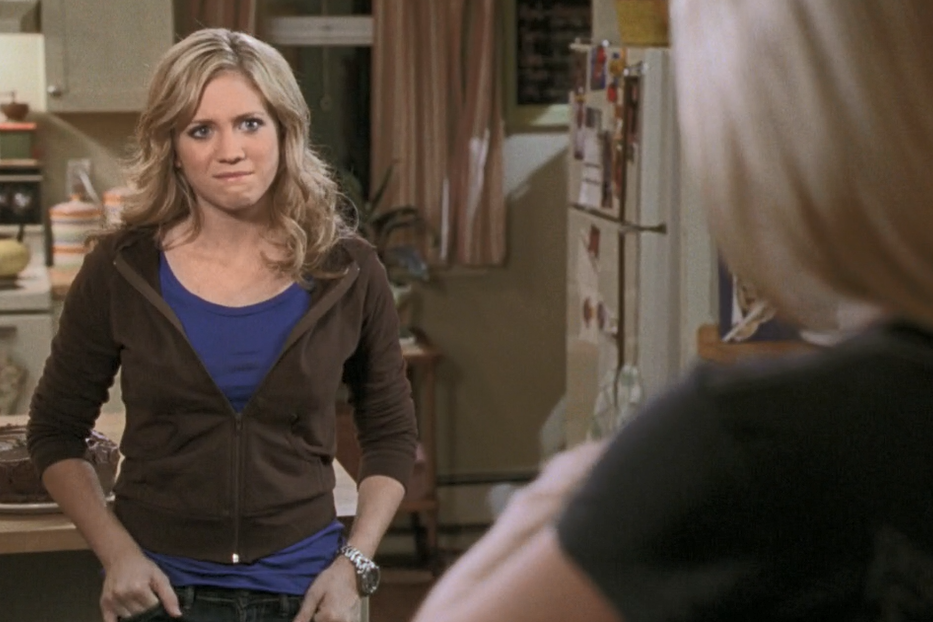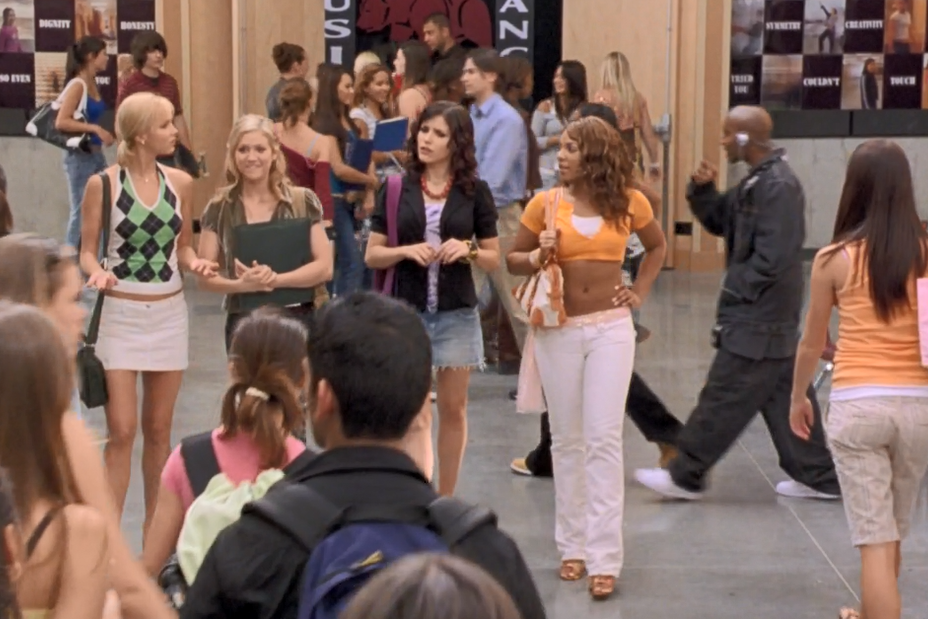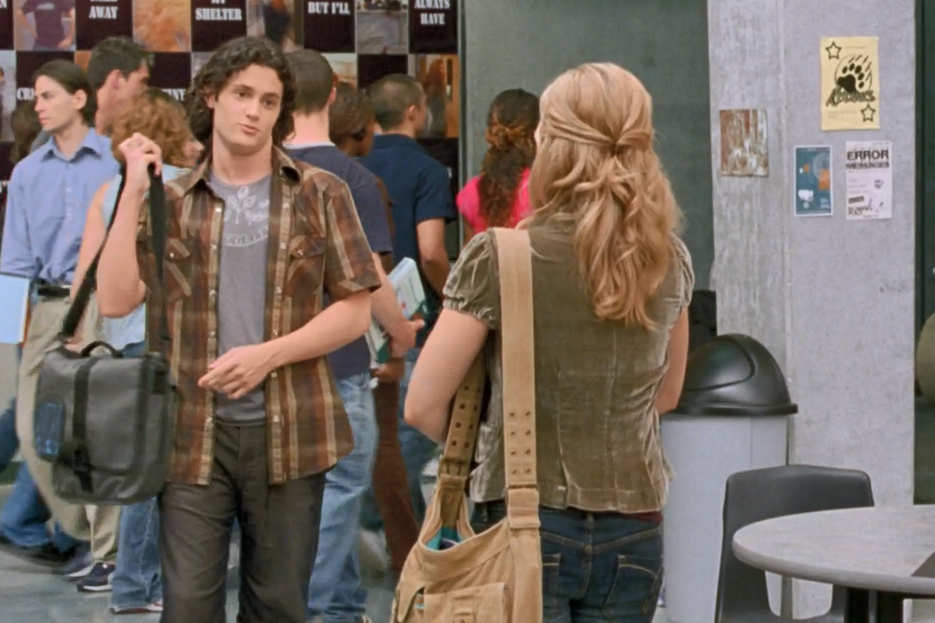Movie Night: John Tucker Must Die
In Which There Are Four Kinds of Women
Originally published on Letterdrop 1/20/2022
John Tucker Must Die is a strange little movie, one that’s floated around in my head since I first saw it as a teen in 2006. It doesn’t quite have the cultural staying power of its era’s other teen movies—2004’s Mean Girls, for example, a film that I’m almost positive inspired some studio head to green-light John Tucker. I was shocked to discover that the movie made $68.8 million at the box office, rather than the fifteen dollars my mom and I probably paid to see it at Entertainment Cinemas. (In my childhood brain, there were two kinds of movies: the local Regal’s first dibs and the more rundown Entertainment’s leftovers. John Tucker was most certainly the latter.)
There are, of course, commonalities with Mean Girls: a new girl in town, a babe-ly guy, a romance-fueled revenge plot—and fatphobic “jokes” and racist tropes aplenty. In the worlds of Mean Girls and John Tucker, a high school divides itself into distinct cliques, none of which overlap or intermingle with one another. Each clique has its specific interests and values and personality, all of which translate to its costume design. (The costume designer? O.C. alum Alexandra Welker.)
Kate is clique-less. She’s spent her life being shuffled from town to town by her single mom; she’s never had a real friend. When we first meet Kate, she’s in seventh grade (but somehow still played by the twenty-year-old Brittany Snow), dressed in a pink floral blouse and overalls.
As she gets older, she trades the overalls for jeans, the blouse for a striped or floral button-down. Her style is simple, even bland, meant to blend in rather than stand out. She is, in her words, “invisible.”
Hot moms wear tube tops and short shorts!
Kate wishes her mom, Lori, was less visible. Lori is young, hot, and always choosing the wrong guy. Kate never bothers to learn the latest boyfriend’s name, preferring to call them all “Skip.” They even wear the same red-and-gray plaid bathrobe.
Every time a boyfriend runs out on her, Lori packs up the car and moves Kate to a new town. Finally, they land in the hometown of one John Tucker, high school basketball star and noted hottie, his look “somewhere between an Abercrombie model and a Greek god.” (Probably helps that he’s played by a twenty-eight-year-old Jesse Metcalfe.)
We first see John in his basketball uniform, the colors red and gray—just like old Skip’s bathrobe. That’s the thing about John Tucker—he’s a player on and off the court.
John is secretly dating three girls from three different cliques; he thinks they’ll never find out because “they never actually talk to each other.” (Imagine if they had TikTok! Oh, wait . . .) The first is Beth, a ditzy “vegan teen activist.” (“Usually code for easy,” says Kate, as if this is a stereotype that we all know. Let Beth eat her meat, Kate!)
We first see Beth at a basketball game. She and her fellow vegans are holding a “Chicks for Chicks” sign and protesting . . . something? Her outfit is typical Beth, a mix of flirty and hippie: a ruffled gray miniskirt, a beaded necklace, and a black graphic tee that reads “Love Animals, Don’t Eat Them.”
The second girl is Carrie, an academic overachiever. She’s covering the game for the school news show, Kodiak Close Up, her blue wrap blouse, blue camisole, and slacks coordinated with the blue mic flag. Carrie finishes her outfit with a simple silver pendant, silver hoops, and a watch—all perfectly preppy and professional.
Hell, the girl wears tailored shorts to gym class.
The third girl is Heather, the popular head cheerleader. Of course, she’s at the game to cheer, her uniform a Kodiak red crop top and skirt. Beth rolls her eyes at the cheerleaders’ dance, and Carrie snarks, “Short skirts equals talent.” I don’t see you out there dancing, Carrie!!
Kate is the first to uncover John’s deception: she’s waitressing at the restaurant where John brings a new date three nights in a row.
For Carrie, John wears a preppy blue sweater and compliments her excellent French.
For Heather, he wears a track jacket in school colors and a sporty T-shirt and discusses team cheers.
For Beth, he wears a black graphic T with a floral pattern up one side and yells about the veal on the menu.
It’s not just that John’s dating girls from different cliques—he’s dressing like them, saying the things they want to hear. He’s preppy, he’s sporty, he’s . . . activist-y. He’s giving his dates whatever they want, and they’re eating it up.
Kate looks on in disbelief. Like the other waitresses, she wears a black T-shirt and black slacks. On Kate, the uniform is another of her “invisible” outfits; she fades into the background as John romances each of his three dates.
Together, the four girls embody the “Four-Girl Ensemble” trope (or, as I like to think of it, “There Are Four Kinds of Women”). Try it with any quartet of female characters—your Little Women, your Girlfriends, your Golden Girls, your Sex and the City gals—and the formula generally fits. You have ditzy Beth, snarky Carrie, glamorous Heather, and admirable Kate, each with their own distinctive style that, over time, starts to meld with the others.
John inadvertently launches his own revenge plot: One morning, he smiles at a gym teacher, and she collapses in a fit of angina. (It is funny because she is fat!!) The first-period gym classes combine, and suddenly, the four girls are in close proximity. Heather overhears Carrie whispering about John, Beth tries to break up Heather and Carrie’s fight—then joins in once she learns they’re squabbling over the same boy. Kate is furious: “This guy is cheating on all of you, and instead of taking it out on him, you’re beating the shit out of each other?”
When the four girls serve detention together, Kate suggests that they “get even” with John. The other three are intrigued by her idea: each still wears their specific clique style, but their color palettes are starting to merge, all shades of purple, pink, and black.
Kate stands apart in a red Henley, light blue T-shirt, and jeans. Her pieces are still simple, but the bright red is bolder than any color she’s worn before. She is the center of attention; the girls want to know who she is.
At detention, Kate also meets Tommy: the “other Tucker.” He’s played by Gossip Girl’s Penn Badgley—a proto Dan Humphrey, if you will. (Pour one out for Penn; between this movie, Gossip Girl, and future Suds subject Easy A, he spent roughly a decade playing teenagers.) Tommy is nothing like his brother, from interests (music, literature, not gaslighting teen girls) to wardrobe (cargo pants, button-downs open over graphic tees). He and Kate have an instant rapport; they talk about her love for “old-school Elvis Costello,” “obscure podcasts,” and “Dave Eggers.”
This trifecta is how you know—if you didn’t already—that a thirtysomething white man wrote this movie.
Soon enough, the four girls decide to make John Tucker “undateable.” First, Beth asks John to pose for a shirtless photo shoot; the girls use the photos for a genital herpes awareness ad.
John parlays the ad into a philanthropy award.
Then, Heather spikes John’s protein powder with estrogen. (You know, a normal escalation!!) During a basketball game, he eats chocolate, asks if his thighs look fat, complains about his tender chest, and runs out of the gymnasium crying.
John gets more dates than ever because girls love his new “sensitive” side.
Weirdly enough, John Tucker might actually have something interesting to say if the movie thought a little harder. People shouldn’t feel ashamed of their STIs! Men should talk about their feelings! In John Tucker, the message isn’t that these standards are terrible and hurtful and should be done away with, but that John is such a master manipulator that he can smile and schmooze his way out of any supposed “wrongdoing.” By allowing John to “get away” with such sins, the movie only enforces that these things are sins to begin with.
After John dumps Beth, Heather, and Carrie, they realize they’ve gone about their revenge the wrong way: they should break John’s heart and use Kate to do it. Kate, used to being friendless and invisible, is easily convinced.
The girls shape Kate into John’s ideal: She joins the cheerleading team, starts wearing their practice uniform at school. Her hair, previously wavy or curly, straightens. Around John, Kate is aloof and indifferent—a challenge. He asks her out multiple times before she finally agrees to a date.
Kate gets ready with the girls, all four united in their mission and their yellow-and-blue color palette: Kate in a light blue bathrobe, Beth in a yellow tank and purple skirt, Heather in a light blue handkerchief-hem top and jeans, and Carrie in a yellow polo and gray slacks.
Beth picks out an outfit for Kate—a lacy camisole, crochet shrug, and dark-wash jeans, all of which look like they could’ve come from Beth’s wardrobe—and Carrie attaches a tiny camera to Kate’s bra. Even on her date, the girls monitor her, instruct her, almost live vicariously through her.
John is treating Kate in a way he never treated the other girls. On their second date, he doesn’t take Kate to the same old restaurant. He gets takeout for dinner on his boat. The other three have never even seen the boat! They share their disbelief and dejection: all in variations on a brown jacket. Let’s face it, they feel like shit.
Kate, meanwhile, looks romantic and radiant: a black-and-white halter dress to complement John’s black blazer and white shirt, a light pink wrap, pearl studs. She’s seeing a new side to John, one he never showed to the other girls.
The next day, Beth, Heather, and Carrie pepper Kate with questions, then quickly realize, oh no, she’s starting to fall for John. Again, the three girls are picking up one another’s colors—blacks, pinks, reds, and yellows—while Kate is off in her own world, in shades of brown and lavender.
Tommy also notices Kate’s transformation. Before she started dating John, Kate and Tommy became chemistry partners (and boy, do they have chemistry!). At the time, they were linked by their striped shirts: Kate in a blue-and-white striped button-down, Tommy in black-and-white striped polo.
But as Kate dates John and her style changes, Tommy’s stays the same. He’s still wearing cargo pants and plaid button-downs, no match for Kate in her new shrugs, dangly earrings, and flippy miniskirts. She’s almost become a hybrid of the three girls.
Carrie decides to find out what John is “really thinking” about Kate. Camera in hand, she hides in a locker in the boys’ locker room. There, John tells his teammates that he’s going to hang out with Kate after the big away game; when they protest, he compares waiting for sex to waiting to open “an ’82 Bordeaux” (a bizarre metaphor for a supposed teenager). His teammates accuse him of being “whipped,” and to save face, John says he’ll “score” after the game with Kate. Alex, I’ll take “Toxic Masculinity” for $400.
The footage quickly convinces Kate to take the next step in the girls’ revenge plan. After the away game, she dresses up in a lacy bra and underwear set—Kodiak red, of course. The other three girls share the same color palette—shades of white, blue, and purple. Unlike Kate, they have no doubts about what they’re doing to John.
From her hotel room, Kate video-chats John. The girls have left him a little surprise under his bed—a red lace thong. After a grainy glimpse at Kate’s lingerie set and a knock at his “inexperience,” John is convinced to put on the thong and scale the balconies to Kate’s hotel room. Kate intentionally gives him the wrong room number, and he ends up on the cheerleading coach’s bed. He’s paraded through the hotel hallway, where his classmates snap pictures of him in the thong. The next school day, the gymnasium door is papered with the photos.
To paraphrase a quote often attributed to Oscar Wilde: everything in John Tucker is about sex, except for sex, which is about embarrassment.
John being John, he quickly turns his humiliation into a fashion trend. He arrives at practice with a whale tail, the thong peeping over his shorts’ waistband. Thongs are great for basketball players, he tells his teammates. “It’s like letting your best friend sleep in a silk hammock. They’re breezy, they don’t bind, and they give just enough swing.” He dunks a ball, and his teammates are sold. Soon, they’re all rocking thongs at practice.
By rebranding the thong from “girly” to sporty and manly, John retains his masculinity and cool. The movie’s message isn’t “wear whatever damn underwear you want!” It’s “only John Tucker can get away with wearing whatever damn underwear he wants.”
Kate confronts John about his “locker room talk,” but he says it “doesn’t mean anything.” “I’m trying so hard,” he tells her, “but I’m out of plays.” John undoes his watch and clasps it around Kate’s wrist, raising her arm high for their classmates to see: “something to show you, and whoever wants to know, that I’m whipped.”
Beth, Heather, and Carrie are delighted by John’s gift; he’s all ready for them to “crush” him at his upcoming birthday party. When Kate hesitates, they attack, united in their palette of cream, orange, and coral. John didn’t fall for the real Kate, the girls say. He fell for “what they made [her].”
Kate, again, stands alone, this time in a blue floral top and jeans. She looks more like the old Kate, the “invisible” Kate, than she has since her first date with John. The girls, and their revenge plot, are losing their power over her.
After a reprimand from Tommy and a heart-to-heart with her mom, Kate is ready to show John the “real” her. She’s back to her wavy hair, her simple style—jeans, a T-shirt, and a zip-up hoodie—but the colors are more vibrant and eye-catching than any she wore in her invisible life.
At the party, the three girls play a video, full of behind-the-scenes footage of their plot to break John’s heart. When the partygoers throw drinks at Kate, the girls come to her defense—and are promptly doused too. The partygoers don’t care when John admits to his lies: “There ain’t nothin’ wrong with hookin’ up with the finest girls in the school!”
Despite his adoring fans, John does learn a little something: by the last scene, he’s taking a clumsy stab at ethical nonmonogamy, introducing his two girlfriends to each other.
The four girls are finally real friends, each in their own style and color palette, no revenge tying them together. Kate has settled into the new version of her old style: jeans and an olive-green-velvet blazer, the style simple but the texture richer than anything she’s worn before.
Kate and Tommy have made up, and maybe they’ll become something more. Look at them in their complementary neutrals and crossbody bags! May they forever read Dave Eggers together.
And then, because this movie just can’t end on a positive note, the credits roll to a “bonus” scene: The male teachers are wearing thongs now! It is funny because they are old and fat! Not because they are adult educators who shouldn’t be taking fashion advice from teenage students! Le sigh.
Man, I promise I’ll talk about a better movie next month! My second teen movie post will drop Thursday, 2/17.


